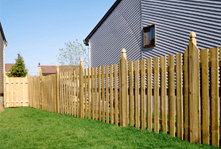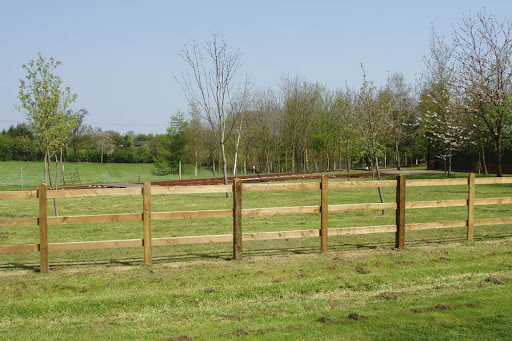Expert Tips for Choosing the Best Fence Builders in New Zealand
Expert Tips for Choosing the Best Fence Builders in New Zealand
Blog Article
A Comprehensive Guide to Fencing Install: What You Need to Learn About Secure Fencing Solutions
When it pertains to setting up a fence, you've obtained a great deal to contemplate. From picking the ideal products to recognizing neighborhood policies, each action can really feel overwhelming. You'll need to examine your home and decide if you intend to deal with the setup on your own or employ a specialist. But that's simply the beginning. Let's discover the crucial aspects that can make or break your fence task.
Understanding Various Types of Fencing Materials
When you're picking a fence, understanding the various kinds of fencing products is important. Each product offers special benefits and drawbacks, affecting your choice. Wood gives a classic appearance and can be customized, however it requires routine upkeep and might rot with time. Plastic is low-maintenance and durable, resisting fading and insects, yet it can be costlier upfront. Chain-link secure fencing is economical and functional for confining big areas, though it lacks personal privacy and aesthetic allure. Steel fencing, like functioned iron or aluminum, uses stamina and sophistication yet may need corrosion protection. Compound products mix the most effective of timber and plastic, offering sturdiness with a natural look. Consider your budget, desired aesthetic appeals, and maintenance preferences when reviewing these alternatives. Inevitably, picking the ideal material will assist you produce a fence that meets your demands and boosts your property's value.
Evaluating Your Residential Property and Fence Demands
Prior to you begin your fence installment, it's necessary to analyze your residential property boundaries and the objective of your fencing. Recognizing regional regulations and licenses will likewise aid you prevent any lawful concerns down the line. By thinking about these variables, you'll ensure your fencing fulfills both your needs and area criteria.
Property Limits and Lines
Recognizing your home boundaries is vital for an effective fence setup, as it not just helps you establish where your fencing will go but also guarantees you're appreciating your neighbors' area. Start by assessing your building deed or survey, which typically outlines the specific limits. You might additionally want to speak with a professional surveyor if you're unclear.
When you've established your limits, note them plainly with risks or flags. This aesthetic aid will assist you throughout the installment and protect against any kind of disagreements with next-door neighbors. Bear in mind, regional zoning regulations might determine fencing positioning and height, so examine those guidelines too. Taking these steps warranties your fencing is appropriately placed and certified, making the entire procedure smoother for you.
Objective of Fence
Fencing offers numerous purposes that can considerably improve your home. It provides protection by developing an obstacle that prevents trespassers and shields your personal belongings. Second, it provides personal privacy, allowing you to appreciate your outside space without bothering with spying eyes. Third, fence can specify your building limits, making it clear where your space ends and your neighbor's begins. Furthermore, it can boost the aesthetic allure of your home, adding character and style while increasing visual allure. A well-placed fence can help take care of sound from nearby roads or neighbors and even maintain pet dogs and youngsters secure. By evaluating your particular requirements, you can select the right kind of fencing to accomplish these advantages effectively.

Local Rules and Permits
Exactly how can you assure your fencing installment follows local regulations? Beginning by consulting your local zoning workplace or local site. Fence Builders. They usually have guidelines about fencing height, materials, and positioning. You'll additionally wish to figure out if you require a license prior to starting your task. Some areas need authorizations for any kind of new fencing, while others may just need them for taller structures.
Additionally, think about residential or commercial property lines and any kind of easements on your land. Marking your boundaries can stop disputes with neighbors or prospective legal issues. By recognizing these policies ahead of time, you can avoid costly mistakes and identify your fence is constructed to last, boosting both your residential or commercial property's value and your assurance.
Local Laws and Permits for Secure Fencing
Before you start your secure fencing task, it is essential to inspect regional policies and get any needed licenses. Each city or region has its own regulations relating to fencing elevation, products, and positioning. These regulations ensure that your fencing abides by safety standards and neighborhood aesthetic appeals.
Begin by visiting your neighborhood zoning workplace or their website to find details needs. Fencing in South Auckland. You might need to send a fencing plan, detailing dimensions and products. Some locations might even require a survey to validate residential property borders. Don't fail to remember to consider any kind of house owners' association (HOA) guidelines, as they can impose added limitations.
Disregarding to comply with these regulations can cause penalties or compelled elimination of your fencing, wasting both money and time. So, put in the time to research and protect the correct permits for a smooth installment process. This action is crucial in making certain your task straightens with neighborhood regulations and area criteria.
Picking Between DIY Installation and Expert Providers
Are you considering whether to take on the fence installation yourself or hire a specialist? If you're useful and have experience with comparable jobs, Do it yourself could save you cash.
Following, think about the time dedication. Setting up a fencing requires time, and if you're managing an active timetable, working with a professional can assure it gets done efficiently. Additionally, think regarding sites the intricacy of the job. If your yard has tough surface or certain design requirements, professionals bring proficiency that can make a distinction.
Last but not least, consider local policies. A specialist recognizes the authorizations and codes straight from the source needed, helping you prevent prospective fines. Inevitably, weigh your skills, time, intricacy, and laws to make the most effective option for your secure fencing task.
Step-by-Step Guide to Fencing Installment
Once you've chosen to progress with your fence installation, adhering to a structured detailed method will guarantee a smooth procedure. Beginning by marking the fence line with stakes and string to visualize the design. Next, check local laws to verify conformity with height and residential property lines.
Dig post openings a minimum of 2 feet deep, spaced according to your fencing type-- normally 6 to 8 feet apart. Insert the articles into the holes and fill them with concrete for security. Once the posts are established, attach the straight rails or panels, ensuring they're level.
Secure the panels or pickets, verifying they straighten properly. If you're using gateways, install them last, guaranteeing they swing easily. Check for any loose connections and make necessary changes. Your fence needs to now prepare to improve your building and provide the privacy or safety and security you need!
Maintenance Tips for Longevity of Your Fence
To maintain your fencing looking fantastic and long-term much longer, normal maintenance is vital. You ought to establish up a cleansing routine, evaluate for any type of damage, and use protective coatings as required. By remaining positive with these jobs, you'll ensure your fencing stays durable and appealing for several years ahead.
Routine Cleaning Schedule
While it might be simple to forget, developing a regular cleansing timetable is crucial for keeping the durability of your fencing. Start by rinsing your fencing with water at the very least as soon as every period to eliminate dust and particles. For wood fences, use a gentle soap remedy and a soft brush to scrub away any mold and mildew or mold. Do not forget to look for any type of corrosion on metal fencings; a cable brush can assist eliminate it, followed by a coat of rust-resistant paint. If you stay in an area with hefty plant pollen or dirt, you might want to enhance your cleaning frequency. Keeping your fence tidy not only improves its look yet additionally extends its life, conserving you cash in the future.
Evaluate for Damage
Routinely examining your fence for damage is important if you want to keep its integrity and longevity. Start by strolling around your fence to look for noticeable signs of wear, such as fractures, loosened boards, or rust. Inspect for any indications of parasites, like termites or woodpeckers, that could endanger your fencing's framework.
Apply Safety Coatings
After checking your fence for damage, applying safety coatings is a vital step in guaranteeing its longevity - Fencing in Auckland. If your fence is plastic or steel, consider a UV-protective spray or paint to avoid fading and corrosion.
Make certain to clean the surface extensively before application, as dirt and gunk can weaken the coating's efficiency. Apply the finishing in completely dry weather condition for much better adhesion, and don't fail to remember to follow the producer's directions for the best results. Consistently reapply every few years to maintain your fencing looking great and standing solid against the aspects.
Cost Factors To Consider and Budgeting for Your Fencing Job
When planning your fencing project, recognizing price factors to consider is important to staying within spending plan. Begin by figuring out Learn More Here the kind of material you want, as prices can vary substantially in between wood, vinyl, and metal. Don't fail to remember to factor in labor prices-- hiring specialists may conserve you time yet can raise your total expenditures.
Next, gauge your residential or commercial property to calculate the direct footage required, as this straight effects product prices. Furthermore, take into consideration any permits you might need, which can contribute to your budget plan.

Last but not least, it's a good idea to reserve a contingency fund for unanticipated expenditures. By intending meticulously and considering these variables, you can produce a realistic budget that satisfies your secure fencing needs without breaking the financial institution.
Often Asked Inquiries
The length of time Does the Typical Fence Setup Take?
The standard fencing installment generally takes one to 3 days, relying on the fence type and size of your lawn. You'll need to think about any type of hold-ups as a result of weather or allow requirements also.
What Should I Do if My Fencing Is Damaged?
If your fencing is damaged, initially analyze the degree of the damage. Repair small problems yourself, however, for major issues, consider getting in touch with a professional. Don't wait also long; it'll assist stop even more complications.
Can I Set Up a Fence on an Incline?
Yes, you can mount a fence on an incline. You'll require to adjust your installation method, either by tipping the panels down or utilizing a racked style to assure security and appropriate alignment with the surface.
What Are the Best Practices for Fencing Paint?
To paint your fencing successfully, start with proper cleansing and sanding. Usage premium paint and use in also strokes. Do not neglect to choose the right weather for paint, ensuring it's dry and light.
How Commonly Should I Check My Fencing?
You should inspect your fence a minimum of two times a year, concentrating on signs of damage, rot, or rust. Regular checks aid you capture concerns early, ensuring your fence stays durable and visually enticing much longer.
Report this page